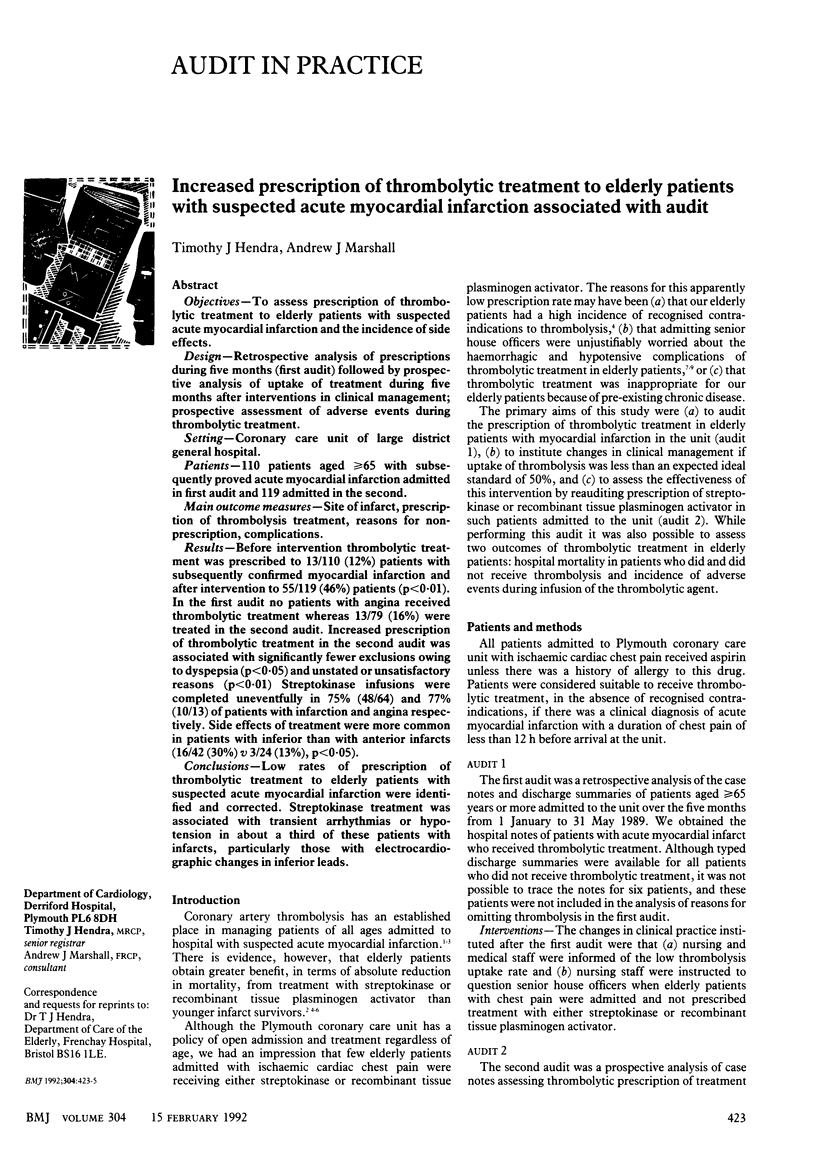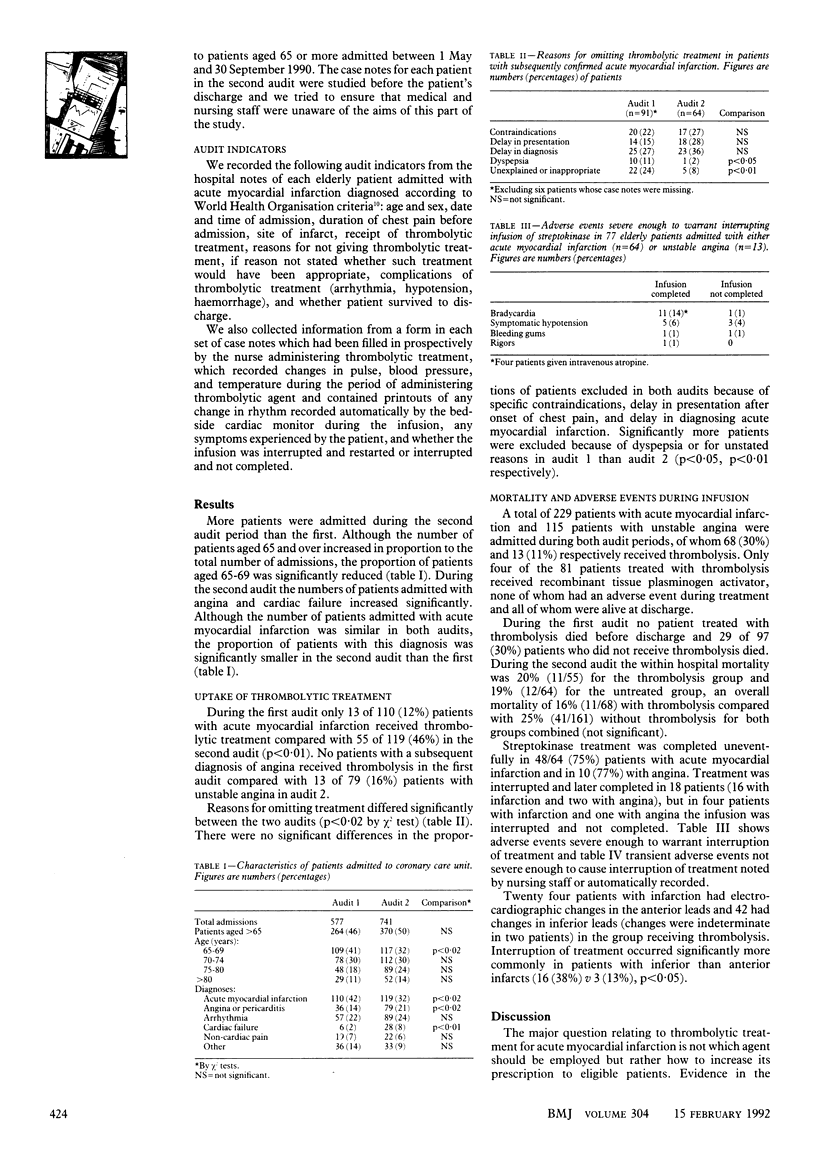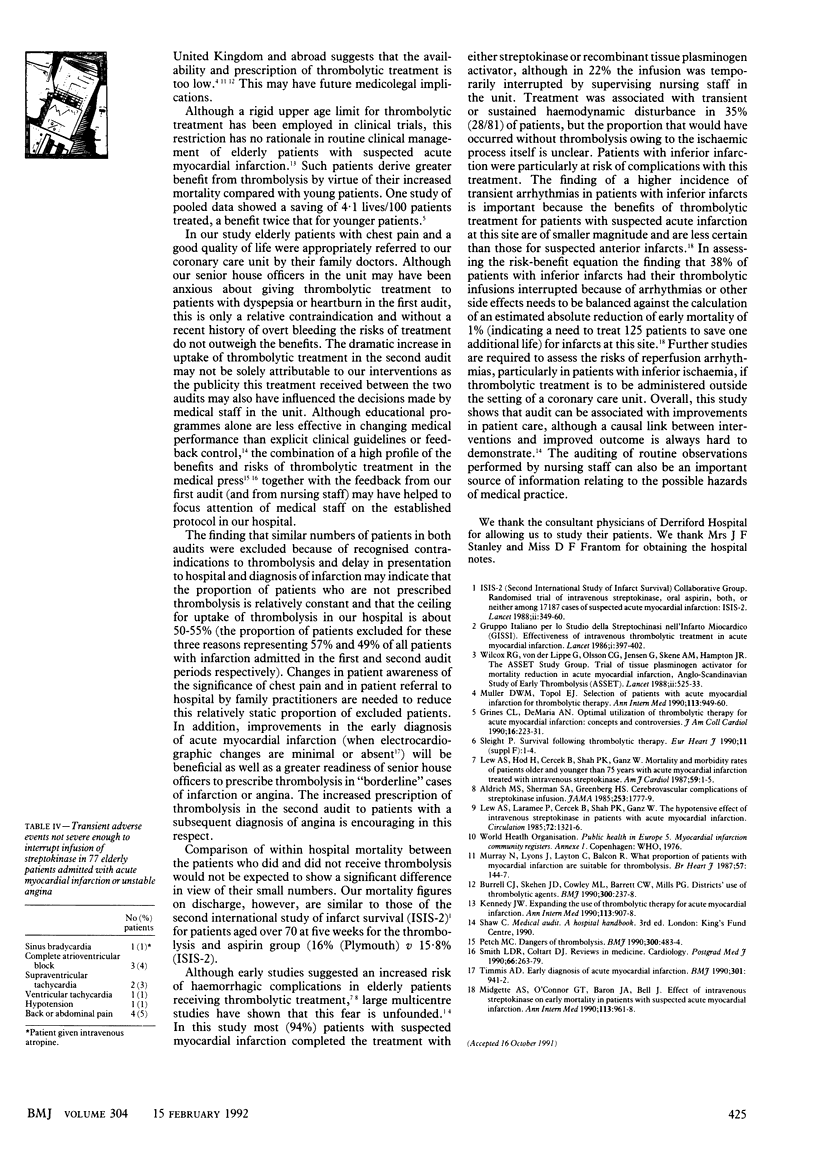Abstract
To assess prescription of thrombolytic treatment to elderly patients with suspected acute myocardial infarction and the incidence of side effects.
Retrospective analysis of prescriptions during five months (first audit) followed by prospective analysis of uptake of treatment during five months after interventions in clinical management; prospective assessment of adverse events during thrombolytic treatment.
Coronary care unit of large district general hospital.
110 patients aged greater than or equal to 65 with subsequently proved acute myocardial infarction admitted in first audit and 119 admitted in the second.
Site of infarct, prescription of thrombolysis treatment, reasons for nonprescription, complications.
Before intervention thrombolytic treatment was prescribed to 13/110 (12%) patients with subsequently confirmed myocardial infarction and after intervention to 55/119 (46%) patients (p less than 0.01). In the first audit no patients with angina received thrombolytic treatment whereas 13/79 (16%) were treated in the second audit. Increased prescription of thrombolytic treatment in the second audit was associated with significantly fewer exclusions owing to dyspepsia (p less than 0.05) and unstated or unsatisfactory reasons (p less than 0.01) Streptokinase infusions were completed uneventfully in 75% (48/64) and 77% (10/13) of patients with infarction and angina respectively. Side effects of treatment were more common in patients with inferior than with anterior infarcts (16/42 (30%) v 3/24 (13%), p less than 0.05).
Low rates of prescription of thrombolytic treatment to elderly patients with suspected acute myocardial infarction were identified and corrected. Streptokinase treatment was associated with transient arrhythmias or hypotension in about a third of these patients with infarcts, particularly those with electrocardiographic changes in inferior leads.
Full text
PDF


Selected References
These references are in PubMed. This may not be the complete list of references from this article.
- Baker S. P., O'Neill B., Haddon W., Jr, Long W. B. The injury severity score: a method for describing patients with multiple injuries and evaluating emergency care. J Trauma. 1974 Mar;14(3):187–196. [PubMed] [Google Scholar]


